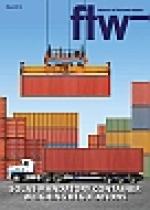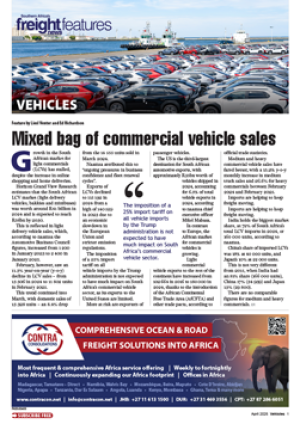First time Solas is regulating shore-based activity
Crew and vessel safety
lie at the heart of the
new Solas regulations,
says Malte Kersten, general
manager of DAL Agency.
“Solas has in the past
focused on vessel safety
regulations like crewing
and stability control. With
the recent amendment and
introduction of the Verified
Gross Mass (VGM) it is the
first time Solas is regulating a
shore-based activity.”
Kersten points out that the
deadweight of a vessel is about
one third of the full laden
vessel weight. The remaining
two thirds is the cargo weight
and unknown to a certain
extent.
“We don’t know what
weight is coming on board.
Whatever is entered into
Transnet’s Navis system is
the information that we
as a shipping line use for
our planning purposes. We
take it for granted that the
information is correct.
“We don’t know who
provides the information for
the pre-advice into Navis – is
it the shipper, the forwarder,
the pack station or the trucker,
who is punching the numbers
into the system?”
And that’s the uncertainty
that must be removed.
“We recently had a vessel
in Durban that went to DCT
Pier 2 where it was discharged
completely and then moved
across to Pier 1 for loading. We
had the perfect opportunity
to have all vessel systems
calibrated on that empty ship
– also the Plimsoll mark on the
vessel side was checked and
verified against the calculated
empty vessel.
“Once the vessel had been
loaded, it set off
from Durban with an
additional 500 tons on board.
We went to PE and had to
decline cargo because of
draught issues in the port. We
then went through PE to Cape
Town and with approximately
2 800 containers on board we
identified about
4 000 additional undeclared
tons. That’s the dimension we
are talking about.”
Kersten points out that
depending on the vessel size
about 30-35 tons equates to
1cm of draught so two heavy
20 foot containers (TEUs)
put the vessel down by
1 centimetre. “Based on this
calculation the vessel was
1.25m deeper than we had
calculated.”
The introduction of the
new regulations is not only in
the best interests of shipping
lines, says Kersten, but equally
so for cargo owners and the
environment. “If containers
are lost overboard it’s
because we don’t know what
exact weights we have to plan
the vessel.”
INSERT
1 cm
30-35 tons of cargo equates
to 1 cm of draught
INSERT & CAPTION
Whatever is entered
into Transnet’s Navis system
is the information that we
as a shipping line use for our
planning purposes.
Malte Kersten

